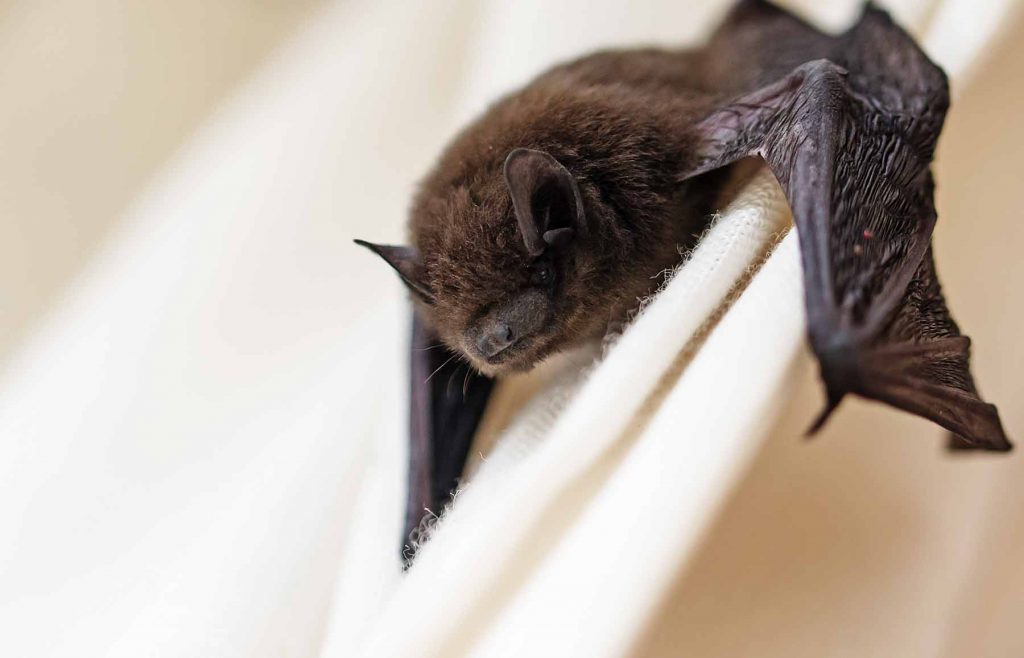Raleigh, North Carolina, is home to a diverse range of bat species that thrive in its unique ecosystem. One of the most common bat species found in this area is the big brown bat (Eptesicus fuscus). These bats have a wingspan of about 11-13 inches and are known for their ability to adapt to various habitats, including forests, urban areas, and even buildings. Another fascinating bat species native to Raleigh is the eastern red bat (Lasiurus borealis). These striking bats have vibrant red fur and can be found roosting in trees during the day. Raleigh is also home to the little brown bat (Myotis lucifugus), which is one of the smallest bat species in North America. Despite their small size, these bats play a crucial role in maintaining the local ecosystem by consuming vast amounts of insects each night. Overall, Raleigh’s bat population is not only diverse but also essential for maintaining a healthy balance in the local environment.
Native Bat Species to Raleigh, North Carolina
The Fascinating World of Bats
Bats, those enigmatic creatures of the night, have long captivated our imagination. With their ability to fly and echolocation skills, they are truly remarkable mammals. Raleigh, North Carolina, is home to several bat species that contribute to the rich biodiversity of the region. Let’s take a closer look at some of these fascinating creatures.
The Eastern Red Bat (Lasiurus borealis)
One of the most striking bat species found in Raleigh is the Eastern Red Bat. These small, colorful bats have a reddish-orange hue that sets them apart from their counterparts. They are known for their stunning appearance and can often be spotted roosting in trees during the day, blending perfectly with autumn foliage.
Unlike many other bats, the Eastern Red Bat prefers to give birth in foliage rather than caves or buildings. This unique adaptation helps protect their young from predators and ensures their survival. These bats are also excellent insect hunters, feasting on mosquitoes, moths, and beetles, making them a valuable asset in controlling pest populations.
The Big Brown Bat (Eptesicus fuscus)
If you’ve ever seen a bat swooping gracefully through the night sky in Raleigh, chances are it was a Big Brown Bat. These medium-sized bats are prevalent in the area and are known for their adaptability and resilience. They have a distinctive brown coloration and can often be found roosting in attics or abandoned buildings.
Big Brown Bats are highly beneficial to humans as they consume vast quantities of agricultural pests, including corn earworms and cucumber beetles. In fact, a single Big Brown Bat can consume up to 1,200 insects in just one hour! Their presence helps reduce the need for harmful pesticides, making them valuable allies for farmers and gardeners alike.
The Brazilian Free-tailed Bat (Tadarida brasiliensis)
The Brazilian Free-tailed Bat is an impressive species that can be found in Raleigh, particularly during the warmer months. These bats are known for their agility and speed, reaching flight speeds of up to 99 miles per hour. Their name comes from their unique tail, which extends beyond the tail membrane, giving them a free-tailed appearance.
These bats are highly social and form large colonies, sometimes consisting of millions of individuals. One famous colony resides in Bracken Cave, Texas, where an estimated 20 million Brazilian Free-tailed Bats congregate each summer. These bats play a crucial role in maintaining the balance of local ecosystems by consuming vast amounts of insects, including agricultural pests.
The Little Brown Bat (Myotis lucifugus)
The Little Brown Bat, as its name suggests, is a small bat species commonly found in Raleigh. These bats have a dark brown coloration and are known for their distinctive mouse-like appearance. They prefer to roost in caves, trees, and even man-made structures such as barns and attics.
Unfortunately, the Little Brown Bat population has been significantly affected by White-nose Syndrome, a devastating fungal disease. This disease has caused a dramatic decline in bat populations across North America. Efforts are underway to study and protect these bats to prevent further decline and preserve the ecological balance they help maintain.
Preserving Raleigh’s Bat Population
Bats are vital components of Raleigh’s ecosystem, playing a crucial role in controlling insect populations and pollinating plants. It is essential to appreciate and protect these remarkable creatures. By preserving natural habitats, avoiding the use of harmful pesticides, and raising awareness about the importance of bats, we can ensure their continued presence in our city.
Raleigh’s native bat species are a testament to the incredible diversity of wildlife that can thrive in urban environments. Let us embrace their presence and celebrate the unique contribution they make to our city’s biodiversity.
Contact For Wildlife Control Help
Thank you for taking the time to read about Triangle Wildlife Removal and our comprehensive animal removal services. We understand the urgency and importance of addressing wildlife issues promptly and efficiently. Our team of experienced professionals is ready to handle any wildlife problem you may be facing, ensuring the safety of your property and the well-being of both you and the animals involved. Don’t hesitate to give us a call at (919) 661-0722 if you are in need of our services. We are here to help and provide you with the peace of mind you deserve.
